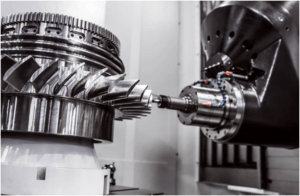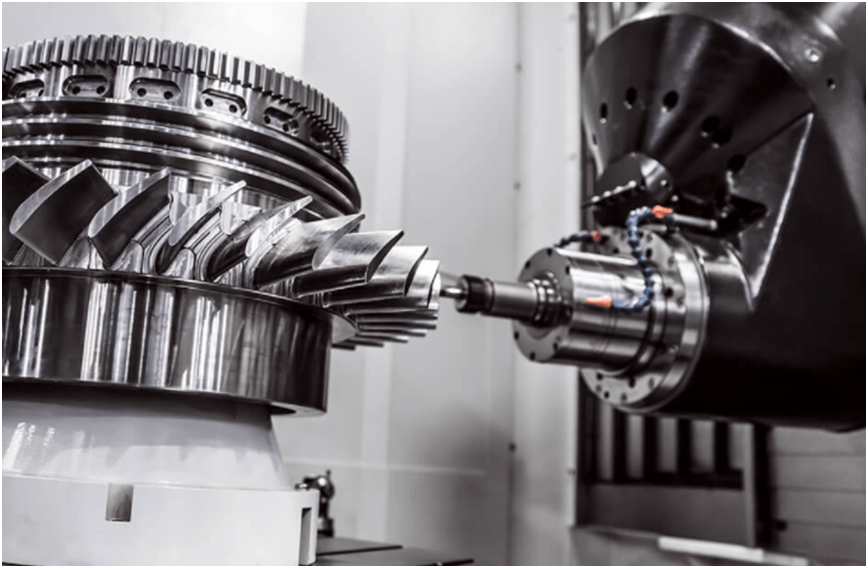Purpose, Principles & Introduction to Machining
These processes are employed when raw materials with low utility and value due to insufficient material properties as well as poor or irregular size, shape, and finish are transformed into products with definite dimensions, forms, and finishes that impart some functional ability to the product in its most fundamental definition.
Over 90% of the objects in an engineering design need a high degree of dimensional and form accuracy, as well as a smooth surface finish, in order to function effectively and efficiently. When adopting procedures such as casting and forging, it is not always feasible to achieve the required level of accuracy and quality. When working with blank components such as these, a little amount of semi-finishing and finishing is required. This may be accomplished via the use of machining and grinding operations. Because of the employment of a grinding wheel, it is probable that CNC turning operations will need the use of grinding operations.
Fabrication is the process of completing a piece of work according to the specifications of the customer, which may include specifications such as desired dimensions and surface polish. The word “finishing” may refer to a broad variety of various activities that are performed on a piece of furniture. Using a cutting tool or toolset that has been moved away from the work surface or surfaces on which the chips are put, the chips may be removed from a prepared blank using a cutting tool or toolset that has been moved away from the work surface. In order to turn an uneven metal rod into a finished rod with accurate dimensions and surface polish, the tool and the workpiece must move in the proper relative motions to each other.
Nonetheless, there are many various methods of CNC metal machining; however, they are all characterized by the removal of material from a work surface in order to achieve the desired dimensions and surface polish. If you want the exact dimensions and finish, it’s vital that the blank and cutting tool be set up correctly (in fixtures) and moved in the correct directions at all times throughout the manufacturing process. Using cutting fluid, which is used to cool and lubricate the workpiece, in order to create a cutting fluid environment, is another common practice.

The use of cutting tools and precision machining allows machine tools to create geometric surfaces on prefabricated blanks, such as flat and cylindrical surfaces, as well as on any other kind of blank that can be made accessible. When it comes to the production of molded objects, both machine and human labor are used. Machined blanks are prefabricated blanks that are moved over a work surface in order to remove excess material in order to create projects that are the proper size, shape, and surface quality for the task at hand. This procedure is referred to as machining (s).
Manufacturing procedures like milling may result in products with drastically different geometries and surface textures from those created earlier in the manufacturing process. Milling, for example, maybe accomplished in a number of different methods. A single cutting edge can only be used when making circular cuts since it is impossible to spin the workpiece with two cutting edges. A gradual, counter-clockwise movement of the cutting tool in the opposite direction of the axis of rotation of the workpiece produces both primary and feed movements.
Drills and bit sets may be used to produce a circular hole in a piece of material. There are many types of spinning tools that may be used to do this, the most popular of which are helical cutting blades with two or four blades on each side. If you want to drill a circular hole in your workpiece, you must feed your tool into the workpiece in a direction that is parallel to the axis of rotation. In order to extend and improve the accuracy of an existing hole, one bent pointed tip must be utilized to rotate the workpiece as it is being spun around. To guarantee that lock components are as excellent as they can be when installed, final fine-finishing treatments are done to them near the conclusion of the manufacturing process.
Roughing is one of the steps involved in the sizing process. There are various ways for scraping metal from a hole that has already been bored, but the most often used is referred to as “raking.” Reaming is a technique that may be used to create holes of any size. This method involves the use of a spinning tool with several cutting blades to produce a flat, straight surface on a workpiece by moving the tool slowly and steadily over the material being worked on. Any feed motion provided to the tool must be perpendicular to the tool’s axis of rotation in order to be effective.
